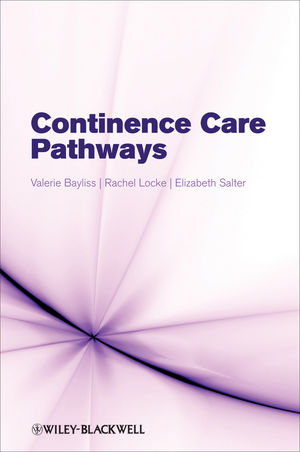Continence Care PathwaysISBN: 978-0-470-06143-5
Paperback
216 pages
June 2009
 |
||||||
List of Contributors.
Foreword.
Preface.
Chapter 1: An Overview of Continence Care and the Case for Care Pathways.
Main policy documents.
Nursing Role.
Providers of care.
Patient centred care.
Background to continence care.
Evolution of Care Pathways.
Benefits of Care Pathways.
Key Summary Points.
Chapter 2: The Impact of Quality and the Need for Evidence.
The patients’ perspective.
Evidence based practice.
The case for change.
Audit project.
The Care Pathway Solution.
The evidence.
Other sources of evidence.
Outcome of evidence base and variance tracking.
Next Steps.
A Case Study of the adoption of care pathways.
Key Summary Points.
Chapter 3: Process of Development of Care Pathways.
Advantages of Care Pathways.
Process mapping and service redesign.
Local adaption of template pathways.
Interviews.
Pilots.
Evaluation.
Overcoming resistance to change.
Improving communication with patients.
Language.
Key Summary Points.
Chapter 4: The Generic Pathway.
Fluid intake.
Cranberry juice.
Caffeine.
Suggested standard statements.
Urinalysis.
Constipation.
Medication.
Environmental factors.
Cognitive dysfunction.
Key Summary Points.
Chapter 5: Symptom related Specific Pathways.
Symptom profile and assessment.
Suggested Standard Statements.
Stress incontinence.
Urge Incontinence.
Overflow Incontinence.
Stress Incontinence Care Pathway.
Urge Incontinence Care Pathway.
Overflow Care Pathway.
Key Summary Points.
Chapter 6: Bowel Care Pathway.
Physiology of the bowel.
Suggested Standard Statements.
Key Summary Points.
Chapter 7: Involving Patients and other Experts.
What is patient involvement?
Expert patient programme.
User Groups.
Who to involve.
When to involve.
How many users.
How to involve users.
Questionnaires.
Content validation.
Focus Groups.
How can user involvement be undertaken locally?
Focus Groups.
Patient shadowing.
Patient diaries.
Discovery interviews.
Critical Friends? Groups.
Key Summary Points.
Appendix 1 Information sheet for patients and document.
Appendix 2 Information for staff.
References and further reading.
Index.



